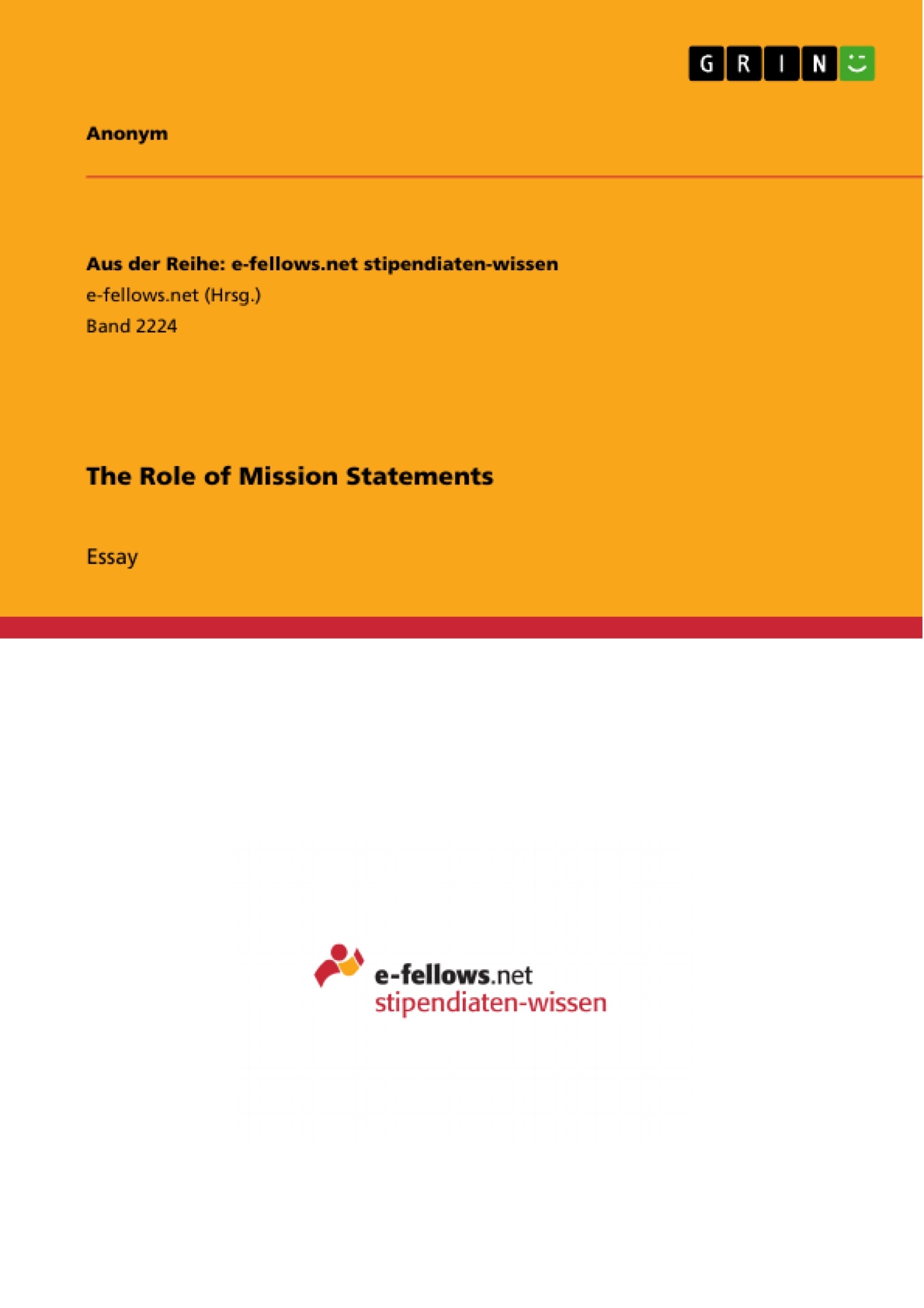Today, most of the worldwide organisations consider the mission and mission statement of an organisation as an important principle. But are mission statements really necessary to be unique and successful in today’s business? And how such a mission statement of an organisation has to be formulated to be authentic, sharp and appropriate for the particular organisation? In the following essay, I would like to give the reader a theoretical background of mission and mission statement and discuss the role of mission statements. Therefore, in a first step the difference between mission and mission statement should be made clear. The reader should understand how such a mission statement has to be composed and what is the function behind all this. In a second step, appropriate examples of mission statements of several world-famous organisations from different industries will be shown, which gives the opportunity to discuss and scrutinize the role of mission statements in today’s world. The essay will be closed by a summary.
Inhaltsverzeichnis (Table of Contents)
- Introduction
- Mission and Mission Statement
- Definition Mission
- Mission Statement
- Definition and whole Purpose of a Mission Statement
- Broad vs. specific Mission Statements
- The Role of Mission Statements
- Non-Profit Organisations: Greenpeace
- Services Sector: Royal Caribbean Cruises (RCL)
- Consumer Goods Sector: Dean Foods
- Consumer Goods Sector: Nike
- Summary
Zielsetzung und Themenschwerpunkte (Objectives and Key Themes)
This essay aims to provide a theoretical background of mission and mission statements and discuss their role in organizations. It explores the difference between mission and mission statement, examining how mission statements are composed and their function. The essay also analyzes examples of mission statements from various world-famous organizations, highlighting the role of mission statements in today's business environment.
- Definition and purpose of mission statements
- The importance of clear and concise mission statements
- The role of mission statements in attracting and retaining stakeholders
- The impact of mission statements on organizational values and reputation
- The differences between broad and specific mission statements
Zusammenfassung der Kapitel (Chapter Summaries)
The introduction establishes the importance of mission and mission statements in today's business landscape, raising questions about their necessity and formulation. Chapter 2 delves into the definition of mission and mission statement, exploring their interconnectedness and the significance of a mission statement as a formal document outlining an organization's purpose and long-term objectives.
Section 2.2.1 further examines the purpose of mission statements, highlighting their importance for both internal and external stakeholders. It emphasizes the role of mission statements in communicating organizational values, fostering employee motivation, and guiding decision-making processes. Section 2.2.2 discusses the distinction between broad and specific mission statements, emphasizing the advantages of specific mission statements in providing clear direction, promoting differentiation, and fostering stakeholder understanding.
Chapter 2.3 explores the role of mission statements in various organizations, using examples from different sectors to illustrate the application of mission statements in practice.
Schlüsselwörter (Keywords)
Mission statements, organizational purpose, strategic management, stakeholders, values, reputation, broad vs. specific, non-profit organizations, services sector, consumer goods sector.
- Quote paper
- Anonym (Author), 2016, The Role of Mission Statements, Munich, GRIN Verlag, https://www.grin.com/document/350496



